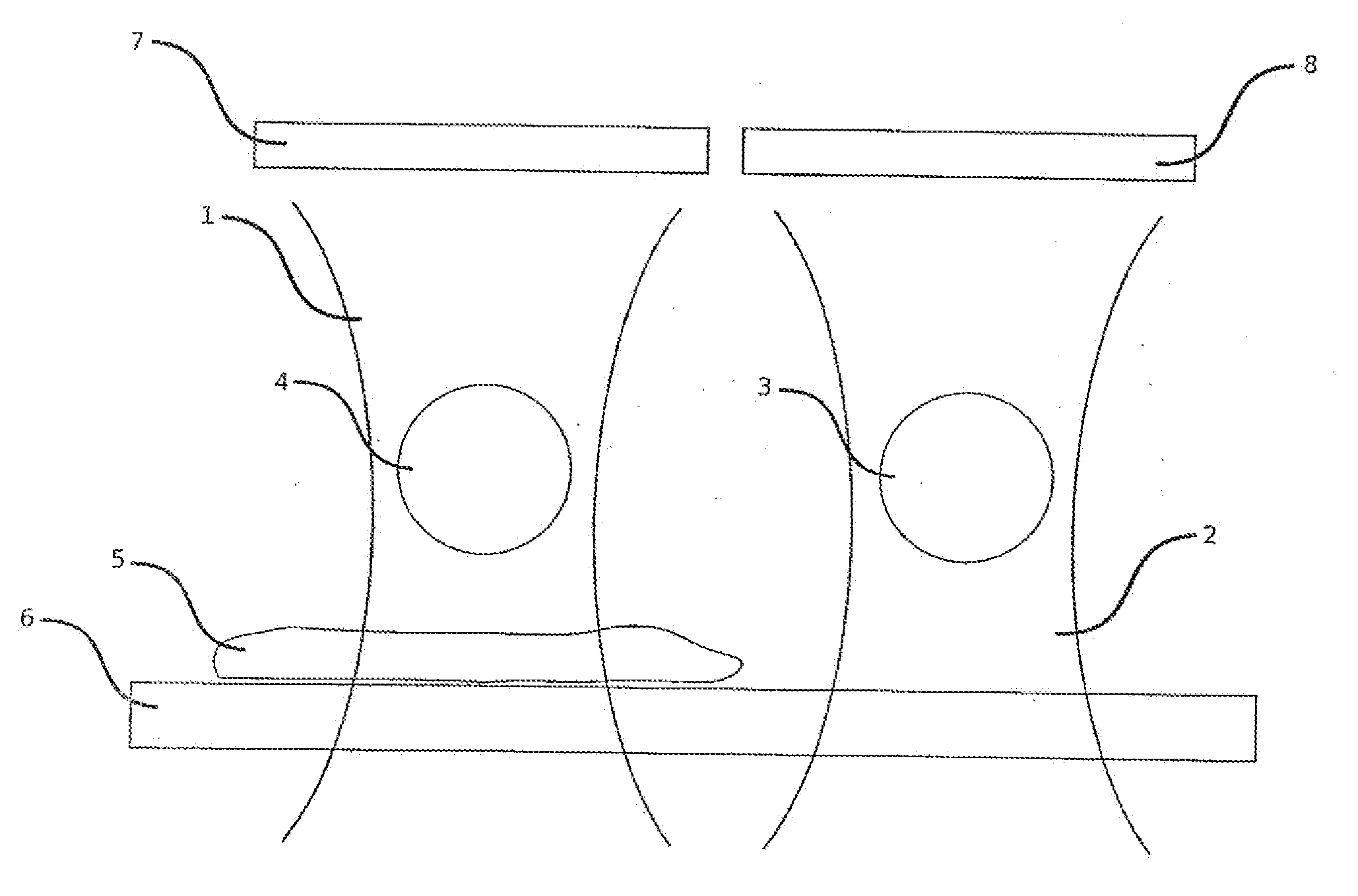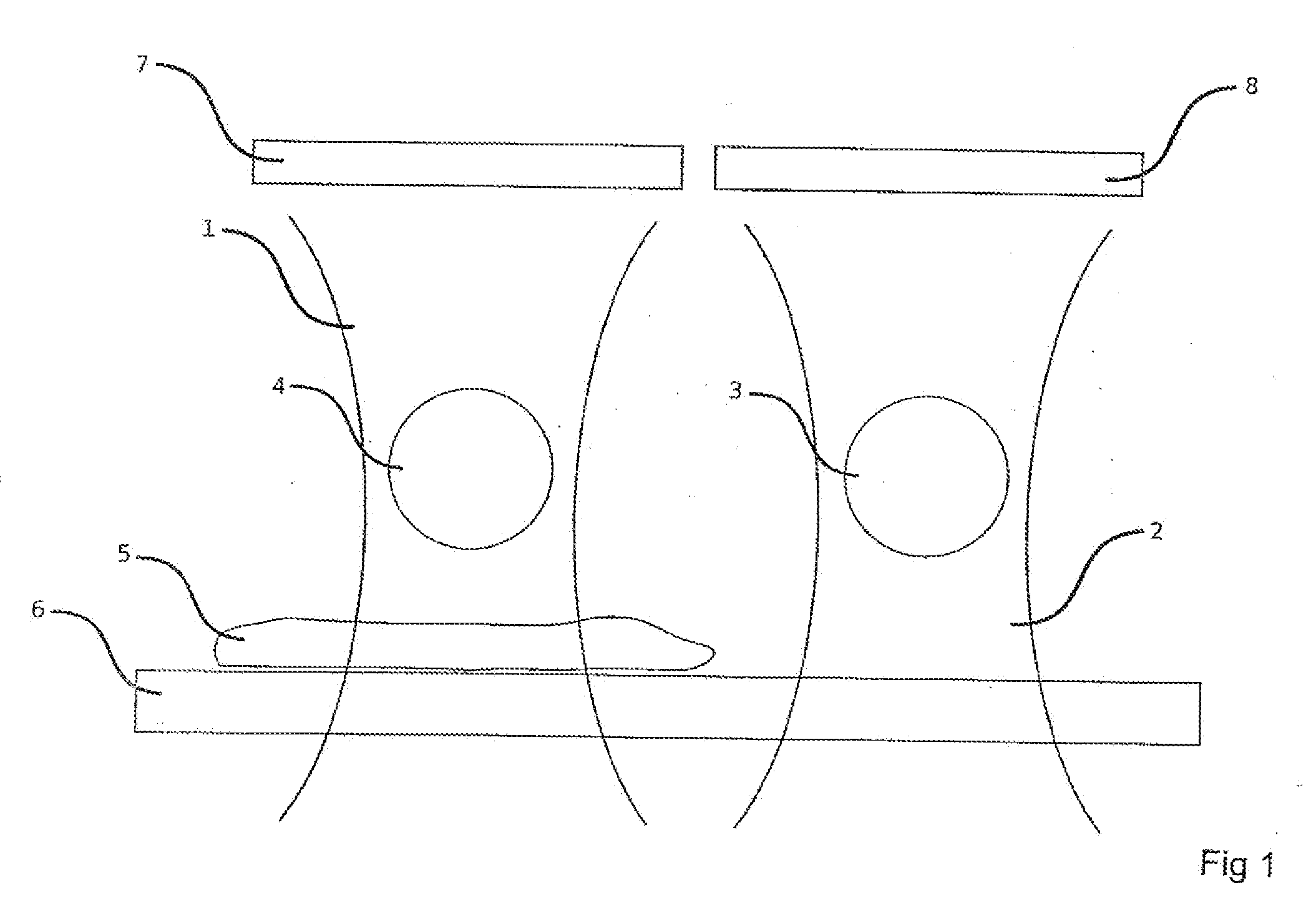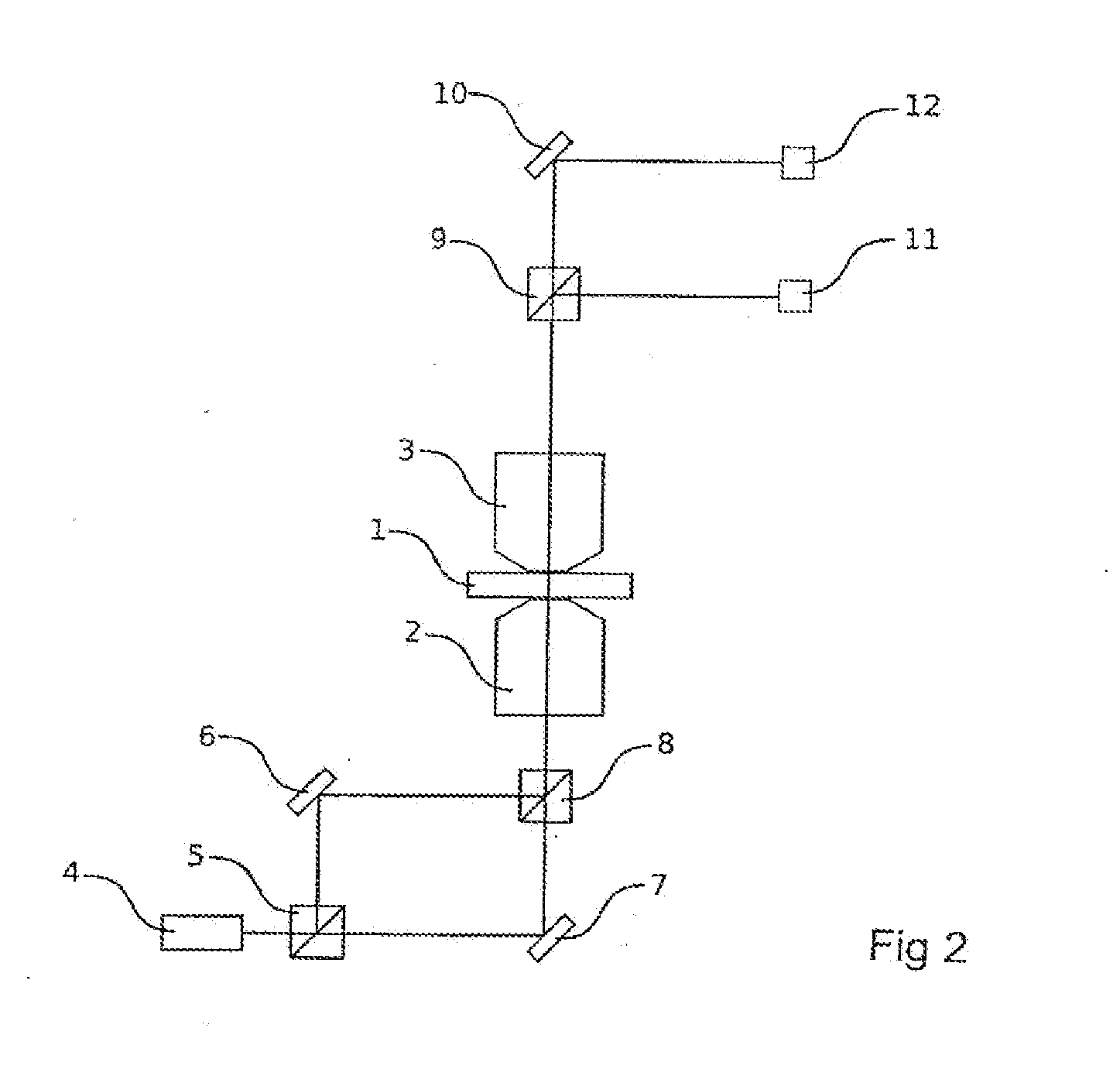Method and Apparatus for Characterizing a Sample with Two or More Optical Traps
- Summary
- Abstract
- Description
- Claims
- Application Information
AI Technical Summary
Benefits of technology
Problems solved by technology
Method used
Image
Examples
Embodiment Construction
[0035]The invention will be explained below by means of preferred embodiments in connection with the attached figures, wherein:
[0036]FIG. 1 shows a simplified illustration of two optical traps including a possible interference on the optical path;
[0037]FIG. 2 shows a schematic diagram of the generation of two traps which distinguish themselves in the polarisation of the light and the separation of the signals of the two traps;
[0038]FIG. 3 shows a schematic diagram of the generation of two traps which distinguish themselves in the wavelength of the light and the separation of the signals of the two traps;
[0039]FIG. 4 shows a schematic diagram of the generation of two traps which distinguish themselves at least in their direction of propagation and the spatially separated detection of the two signals;
[0040]FIGS. 5a and b show a schematic diagram for possible coupled movements of two traps;
[0041]FIG. 6 shows a schematic diagram for possible coupled movements of two or more traps.
[0042]...
PUM
 Login to View More
Login to View More Abstract
Description
Claims
Application Information
 Login to View More
Login to View More - R&D
- Intellectual Property
- Life Sciences
- Materials
- Tech Scout
- Unparalleled Data Quality
- Higher Quality Content
- 60% Fewer Hallucinations
Browse by: Latest US Patents, China's latest patents, Technical Efficacy Thesaurus, Application Domain, Technology Topic, Popular Technical Reports.
© 2025 PatSnap. All rights reserved.Legal|Privacy policy|Modern Slavery Act Transparency Statement|Sitemap|About US| Contact US: help@patsnap.com



